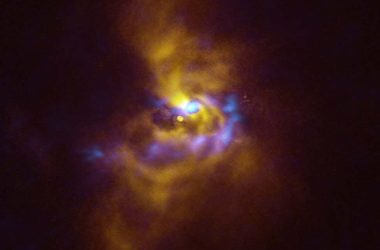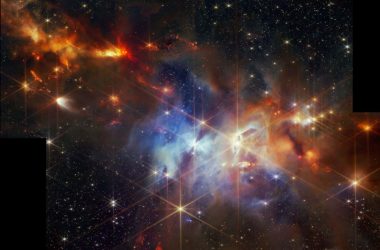An artist’s impression of HD 45166, an unusually magnetic star, showing how intense winds of particles blowing away from the star are trapped by the magnetic field
ESO/L. Calcada
A new type of star may be the solution to a cosmic mystery. After a century of study, astronomers have finally determined why a star called HD 45166 appears so peculiar. This discovery could potentially unlock the secrets of magnetars, a type of star that has long puzzled scientists.
HD 45166 is located in a binary system approximately 3000 light years away and belongs to a class of stars known as Wolf-Rayet stars, or helium stars. These stars have shed their outer hydrogen layers, exposing the underlying helium. However, HD 45166 has always stood out from other Wolf-Rayet stars. “This star was known to be weird for about 100 years,” says Tomer Shenar from the University of Amsterdam. “It contradicted existing theories, so it warranted further investigation.”
Shenar and his colleagues have conducted a series of observations on HD 45166, focusing on analyzing its light spectrum to gain insight into its behavior. Their findings revealed an exceptionally strong magnetic field, surpassing that of any other star of similar size that has been measured before.
Contrary to normal Wolf-Rayet stars, the peculiar appearance of HD 45166 is likely due to material outflows being trapped in its magnetic field instead of flowing away. Shenar explains, “What you would see up close is mostly material trapped in arcs going between the poles of the star and colliding in the middle. You’d see this thick ball of gas, and sometimes piercing through this you’d see the actual star.”
These powerful magnetic fields suggest that HD 45166 will likely become a magnetar when it eventually collapses in on itself, a type of neutron star with the strongest magnetic fields in the universe. Magnetars account for approximately 10% of all neutron stars, but their formation process has remained a mystery for decades. If stars like HD 45166 do indeed transform into magnetars, this long-standing puzzle may finally be solved.
The next step for Shenar and his team is twofold. Firstly, they plan to continue observing the binary system for several more years to gain a better understanding of the star’s properties and eventual fate. Additionally, they intend to search for more magnetized helium stars, as their calculations suggest that hundreds of them exist in our galaxy. By studying these stars at various stages of stellar evolution, they hope to unravel the true origins of magnetars.












